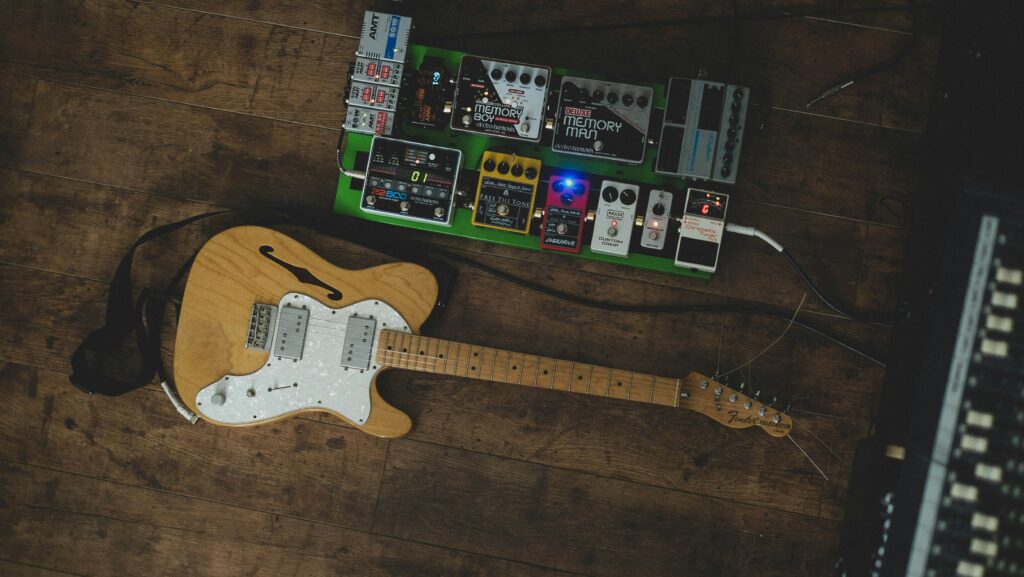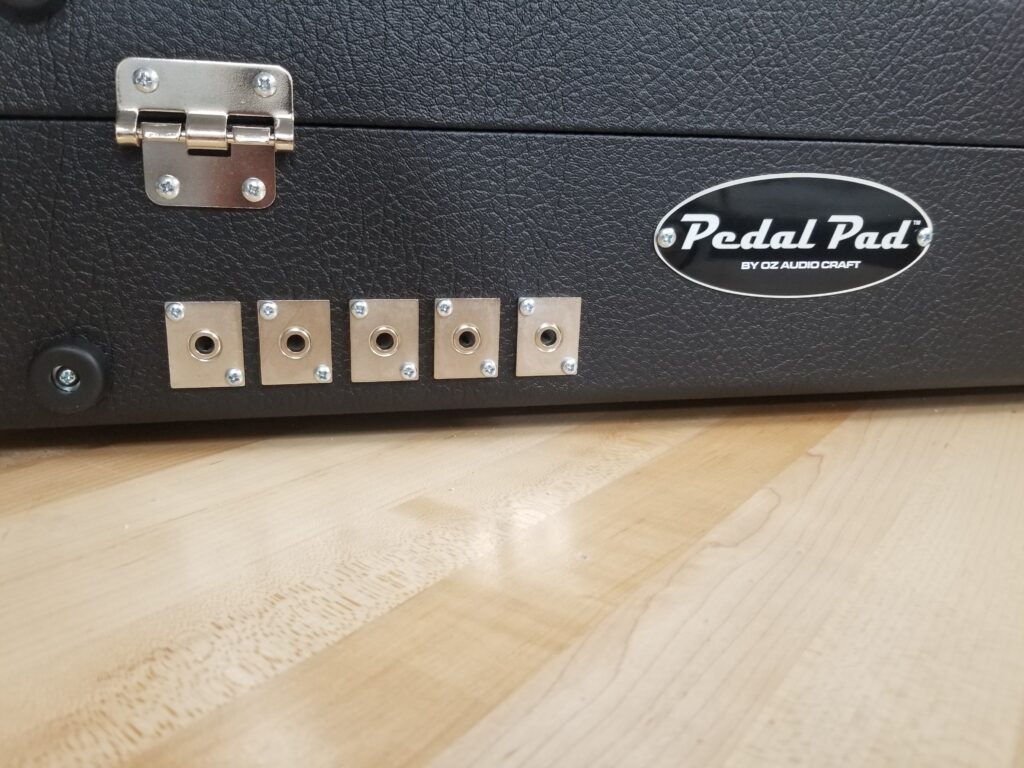
Setting up a pedalboard is a rite of passage for many guitar players, but coming up with the perfect pedalboard layout is often easier said than done. There are a lot of different things to consider, and while experimentation through trial and error may work for some, it’s always good to have some pedalboard layout tips to get you started.
There’s no one-size-fits-all correct way to set up a pedalboard, and many guitarists spend their whole lives experimenting and making changes to their boards. However, there are still plenty of things that you can do to optimize your layout. So, if you’re serious about giving your board the best layout possible, here is everything you need to know about how to optimize guitar pedal setup.
Once you have your pedalboard and the pedals you plan to put on it, there are still a few other things you’ll need to think about and buy before you can start setting up your board.
The first thing you need to consider is how you’ll actually attach the pedals to your board. Velcro is by far the easiest, cheapest, and most popular option here, and it does work great, especially if you like to swap out your pedals every now and then. However, velcro does have its drawbacks, and many guitarists opt to use a higher quality velcro alternative like 3M Dual Lock, which is stronger and offers more stability.
The second thing you’ll need to get are patch cables. Patch cables are small cables that connect pedals together and allow the audio signal to flow through your pedal chain. There are plenty of different types of patch cables, including cables with right-angle plugs, straight plugs, or a combination of both, so you’ll need to think about the location of the inputs and outputs on each of your pedals and which cables will make it easiest to connect them.
Another thing you need to consider when setting up your pedalboard is how you plan to power your pedals. There are essentially two different ways to do this, the first of which is the daisy chain.
Daisy chains are a popular option for beginners as they are cheap, easy to set up, and allow you to power multiple pedals through the same outlet. However, daisy chains come with a number of disadvantages including that they often produce unwanted noise and can only be used with pedals of the same voltage and polarity.
For this reason, any optimal pedalboard layout will use a dedicated power supply instead. These power supplies allow you to power each pedal individually, providing more even power to each pedal and allowing you to power pedals of different voltages and polarities.
Still, this still leaves the question of where to put this power supply. Many guitarists simply place the power supply at the back of the pedal deck behind all their pedals. However, if you want to maximize pedal deck space and prevent any induced hum, by far the best place to put it is below the pedal deck.

First-time board builders often overlook the importance of pedal order. A pedal chain is exactly that: a chain and every pedal that the audio output travels through will have a small effect on the sound produced, so getting pedal order right is essential to properly arranging guitar pedalboards.
There is no order that is technically correct, and you’re welcome to experiment, especially when it comes to effects loops. Still, if you want to start off with a pedal chain order that works well right away, there are a number of general pedalboard layout tips you should follow.
In general, tuners always come first, as it’s important for your tuner to receive the cleanest, most unaltered sound to be accurate. Then, after your tuner, you should place any pedals that affect the dynamics or pitch of the output, like compressors, wah pedals, and pitch shifters.
Your standard distortion, overdrive, and fuzz pedals should be next in line, followed by modulation pedals like chorus, flangers, and phasers. If you have any delay or loop pedals, they should come next in line, and lastly, reverb pedals should go at the end.
Other than that, you can place volume pedals either at the beginning right after your tuner or at the end, depending on your preferences.
One common problem with larger pedalboards is that the quality of the signal deteriorates the farther it has to travel. Buffer pedals, which preserve the strength and quality of this signal, are a great way to combat this, but you will need to plan where you want to put them on your board.
In general, if you want the best sound, you should use a buffer on any pedalboard with more than five pedals in the chain, but many guitarists disagree on which placement is best. Some say you should put your buffer between your guitar and the first pedal in your chain, while others claim it’s best to put it after your fuzz, overdrive, and distortion pedals.
At the end of the day, the choice is yours, but no matter what, most optimal pedalboard layouts should include a buffer somewhere.
Now that you have a handle on all the essentials, there are still a few general pedalboard layout tips that you can use to help optimize your board.
First, it’s always a good idea to try to experiment with potential layouts before you actually attach the pedals to your board. Arranging your pedals on the floor can give you a better idea of what the final result will look like and if it will feasibly fit on your board.
Secondly, you should also consider which pedals you use the most when you play. If you use some pedals a lot more than others, it’s a good idea to place them at the front of your board where they are easiest to reach.

Are you looking for the perfect custom pedalboard? Give Pedal Pad a call! Their team of custom board builders are pedalboard experts and can help you design the perfect custom pedalboard that makes it easy to optimize your layout in a way that meets your specific needs as a player. So, don’t settle for some lesser board when you could have the board of your dreams. Contact Pedal Pad and start designing your new custom pedalboard today!